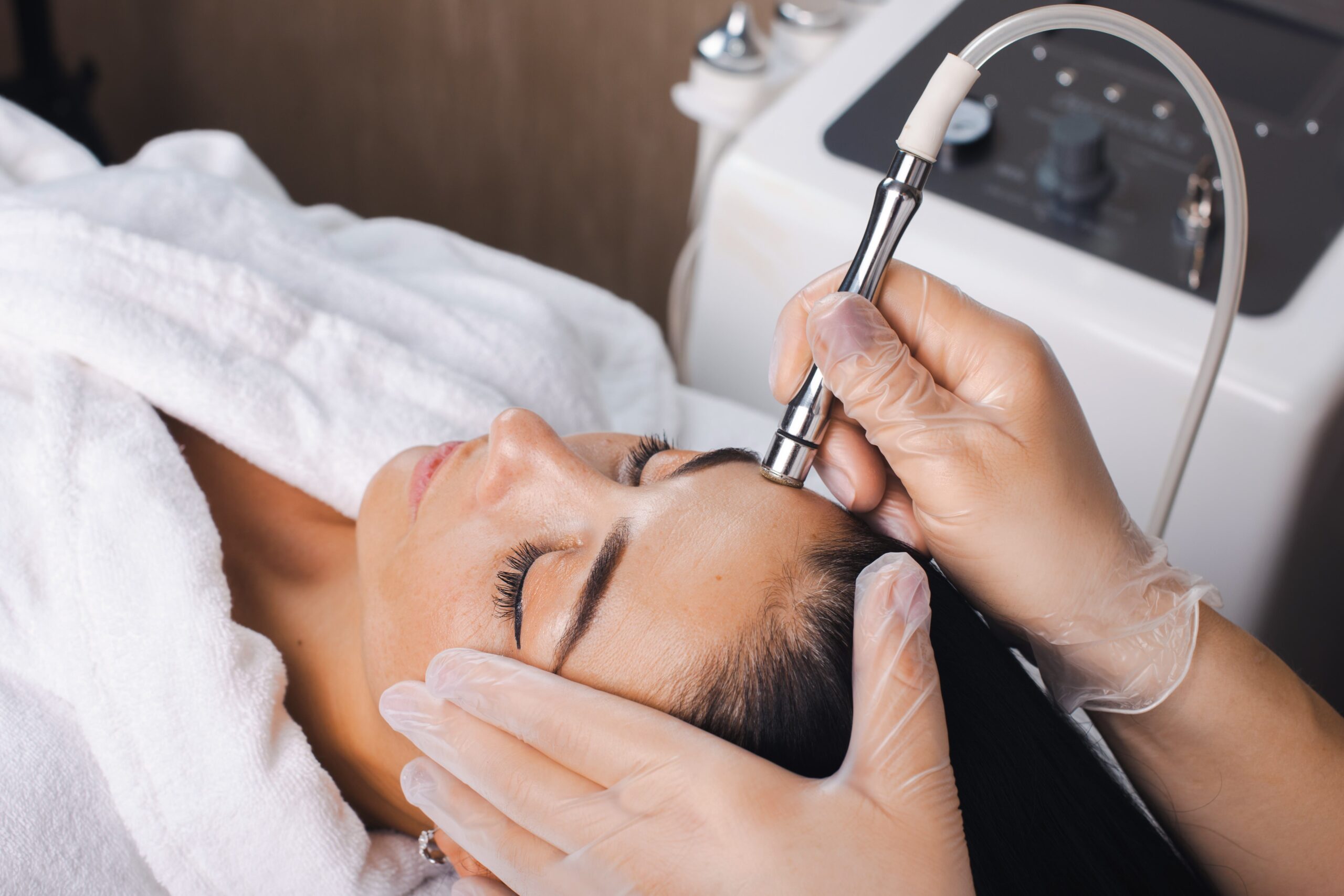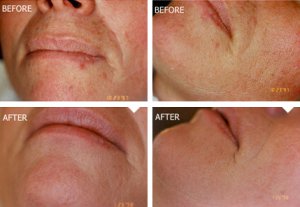Transform Your Skin with Professional Microdermabrasion Treatments

Microdermabrasion is a popular non-invasive cosmetic procedure that helps rejuvenate the skin by removing the outer layer of dead skin cells. This procedure has been gaining popularity among people looking for a quick and effective way to improve the appearance of their skin. Medical microdermabrasion treatment takes this to the next level, providing a more intense and deeper exfoliation for maximum results.
What You Need to Know About Microdermabrasion
Medical microdermabrasion is a cosmetic procedure that uses a specialized device to exfoliate the skin, removing the outer layer of dead skin cells. This treatment is performed by a licensed and trained medical or skin care professional.
The device used in medical microdermabrasion treatment is a small, handheld wand that emits a stream of fine crystals or a diamond-tipped wand that removes the outer layer of the skin. This creates a smoother, brighter, and more even skin tone. The procedure typically takes around 30 minutes to complete and can be performed on the face, neck, chest, and hands.
Benefits of Microdermabrasion for Your Skin
Medical microdermabrasion has many benefits, including:
- Improved skin texture and tone: This treatment can reduce the appearance of fine lines, wrinkles, and other signs of aging. It can also improve the texture and tone of the skin, making it smoother and more even.
- Reduced appearance of scars: Medical microdermabrasion treatment can reduce the appearance of acne scars, sun damage, and other types of scars.
- Increased collagen production: The exfoliation provided by medical microdermabrasion stimulates collagen production, which can help improve the elasticity and firmness of the skin.
- Better absorption of skincare products: Removing the outer layer of dead skin cells can help skincare products penetrate deeper into the skin, making them more effective.
- Non-invasive: Medical microdermabrasion is a non-invasive procedure that does not require any downtime or recovery.
What to Expect During a Microdermabrasion Session with Anara Medspa
 During a microdermabrasion session at Anara Medspa, you can expect a thorough and rejuvenating experience tailored to enhance your skin’s health and appearance. Here’s what the session typically involves:
During a microdermabrasion session at Anara Medspa, you can expect a thorough and rejuvenating experience tailored to enhance your skin’s health and appearance. Here’s what the session typically involves:
Consultation: Begin with a skin assessment to tailor the treatment to your specific needs.
- Cleansing: Your face will be cleansed to prepare for microdermabrasion.
- Microdermabrasion: A diamond-tipped wand gently exfoliates the skin, removing dead cells and stimulating collagen production.
- Optionally oxygen infusion, cryotherapy or LED therapy may be added.
- Serums and Moisturizers: Post-exfoliation, targeted serums and moisturizers are applied to nourish and address specific skin concerns.
- Sunscreen: Sunscreen is applied to protect the new skin from UV damage.
Aftercare Tips for Post-Microdermabrasion in New Jersey
After undergoing microdermabrasion at Anara Medspa in New Jersey, following proper aftercare is essential to maximize the benefits of your treatment and maintain your skin’s health. Here are some key tips to consider:
- Hydration: Keep your skin well-hydrated by drinking plenty of water and using a good quality moisturizer that is appropriate for your skin type. Our aestheticians will advise you on the right one. Hydration is key to helping your skin heal and maintain its soft, rejuvenated appearance.
- Sun Protection: Your skin will be more sensitive to the UV radiation immediately after treatment. Apply a sunscreen with at least SPF 50 to protect your skin from UV rays. Avoid direct sunlight as much as possible for a few days after the procedure.
- Gentle Skincare Products: Use gentle, non-abrasive skincare products for at least one week post-treatment. Avoid any products that contain retinoids, alpha hydroxy acids (AHAs), beta hydroxy acids (BHAs), or any other chemical exfoliants as these can irritate the newly treated skin.
- Avoid Makeup: If possible, avoid applying makeup for at least 48 hours to allow your skin to breathe and recover without being clogged by cosmetic products.
- Avoid Harsh Activities: Refrain from activities that cause excessive sweating, such as heavy workouts, saunas, or steam rooms for at least 48 hours post-treatment.
- Touching or Picking: Avoid touching or picking at your face. Your skin may be more sensitive and susceptible to bacteria, which can lead to irritation or infection. Avoid exfoliating brushes like Clarisonic for a week or more.
- Follow-Up Care: Follow any specific instructions provided by your skincare or microdermabrasion specialist at Anara Medspa. They may recommend specific products or regimens to enhance and prolong your treatment results.
By following these aftercare tips, you can help ensure that your skin remains healthy, beautiful, and vibrant after your microdermabrasion treatment at Anara Medspa.
Schedule Your Microdermabrasion Appointment Today with Anara Medspa
 Medical microdermabrasion is a safe and effective way to improve the appearance of your skin. If you are looking for this treatment in New Jersey, look no further than Anara Medspa. Just be sure and trust our experienced professional who uses high-quality equipment and products. With our experts, you can enjoy smoother, brighter, and more youthful-looking skin.
Medical microdermabrasion is a safe and effective way to improve the appearance of your skin. If you are looking for this treatment in New Jersey, look no further than Anara Medspa. Just be sure and trust our experienced professional who uses high-quality equipment and products. With our experts, you can enjoy smoother, brighter, and more youthful-looking skin.
Frequently Asked Questions About Microdermabrasion Treatment
When looking for a provider of medical microdermabrasion in New Jersey, it is important to do your research. Look for a licensed and trained medical professional who has experience performing this procedure. It is also important to consider the quality of the equipment and products used in the procedure. Look for a provider who uses high-quality, medical-grade equipment and physician grade skincare products to ensure the best results.
Dermabrasion is a more intensive procedure designed to remove deeper layers of the skin. It’s typically used to treat more significant skin issues such as deeper scars, wrinkles, and sometimes skin lesions. The process involves using a rotating instrument to sand down the skin. Because dermabrasion is more aggressive, it requires anesthesia during the procedure and a longer recovery period during which the skin heals and regenerates. The results can be dramatic but come with a higher risk of side effects and complications such as redness, swelling, and changes in skin color. We do not offer Dermabrasion at Anara Medspa.
Microdermabrasion, on the other hand, is much less invasive. It involves using a device that exfoliates the skin with tiny crystals or a diamond-tipped wand to gently remove the outermost layer of dead skin cells. Microdermabrasion is suitable for all skin types and colors, and it helps to rejuvenate the skin by reducing the appearance of fine lines, early sun damage, and mild, shallow acne marks. It does not require downtime, making it a more convenient option for people who cannot take time off for recovery.
The results of medical microdermabrasion can vary depending on individual skin types and the specific skin issues being treated. Typically, the initial visible improvements—such as a brighter complexion, glow and smoother skin texture—can be seen immediately after treatment. However, these effects are generally temporary.
For more enduring results, multiple sessions are often recommended. A series of treatments, typically spaced about two to four weeks apart, can help to achieve more significant improvements in skin tone, texture, and elasticity, as well as a reduction in the appearance of fine lines, wrinkles, and hyperpigmentation.
To maintain the results of medical microdermabrasion, regular maintenance treatments may be necessary, typically every one to three months, depending on your skin’s condition and your aesthetic goals. Additionally, maintaining a good skincare routine at home, including using sunscreen daily, staying hydrated, and using quality skincare products as recommended by your physician or skincare professional, will help extend the results.
Microdermabrasion is generally safe for most skin types, but there are certain conditions where this treatment might not be recommended. Here are some individuals who should avoid microdermabrasion:
- Active Skin Infections: Those with active skin infections, such as herpes simplex (cold sores) or impetigo, boils, cellulitis, and furuncles, should avoid microdermabrasion until the infection has fully healed.
- Severe Acne: People with numerous active, inflamed pimples can experience further irritation or spread the acne. Moreover, the procedure can cause severe discomfort when performed over cystic acne or open blemishes. This is a relative contraindication.
- Rosacea or Dermatitis: Individuals with sensitive skin conditions such as marked rosacea, dermatitis, or other chronic inflammatory conditions may find that microdermabrasion exacerbates their symptoms.
- Active and untreated Skin Cancer
- Accutane Users: If you are currently taking or have recently completed a course of Accutane (isotretinoin), it is advised to wait at least 6-8 months before undergoing microdermabrasion due to increased risks of scarring and irritation.
- Recent Chemical Peels or Other Procedures: Individuals who have had recent chemical peels, laser treatments, or other skin procedures should allow their skin adequate time to heal before undergoing microdermabrasion, typically 2-4 weeks.
- Active Eczema, Psoriasis, or Other Chronic Conditions: Those with chronic skin conditions such as eczema or psoriasis may experience worsening symptoms following microdermabrasion.
It’s essential for anyone considering microdermabrasion to consult with an expert Physician or licensed skincare professional who can assess their skin type and any potential risk factors to ensure the treatment is appropriate for their skin’s condition.
Microdermabrasion primarily targets the outermost layer of the skin, specifically what is called the stratum corneum, which is part of the epidermis. This treatment effectively removes about 20% of the stratum corneum, helping to eliminate dead skin cells and promote the regeneration of a new, smoother skin surface
There isn’t a definitive “best age” for microdermabrasion as it largely depends on individual skin concerns and goals. However, it can be safely performed on people of almost all ages, provided there are no specific contraindications like active infections, severe acne, or certain skin conditions like eczema or psoriasis. Younger individuals might seek microdermabrasion for acne scars and skin clarity, while older adults often use it to reduce fine lines and age-related skin texture changes. It’s generally a suitable treatment for those seeking minimal downtime and quick cosmetic improvements, making it popular among various age groups for maintaining skin health and vitality
Microdermabrasion primarily exfoliates the epidermis, which is the outermost layer of the skin. This procedure specifically targets the stratum corneum, the uppermost part of the epidermis, composed of dead skin cells. By removing these outer layers, microdermabrasion promotes the regeneration of new, healthier skin cells, improving skin texture and appearance.
Yes, microdermabrasion is effective for removing blackheads. This treatment exfoliates the skin to remove dead cells and cleans out pores, which helps eliminate blackheads and prevents new ones from forming. For some blackheads manual extraction may be necessary. Microdermabrasion also promotes cell renewal and collagen production, leading to healthier, smoother skin. Regular sessions can help maintain clear pores and reduce the likelihood of blackheads reoccurring.

